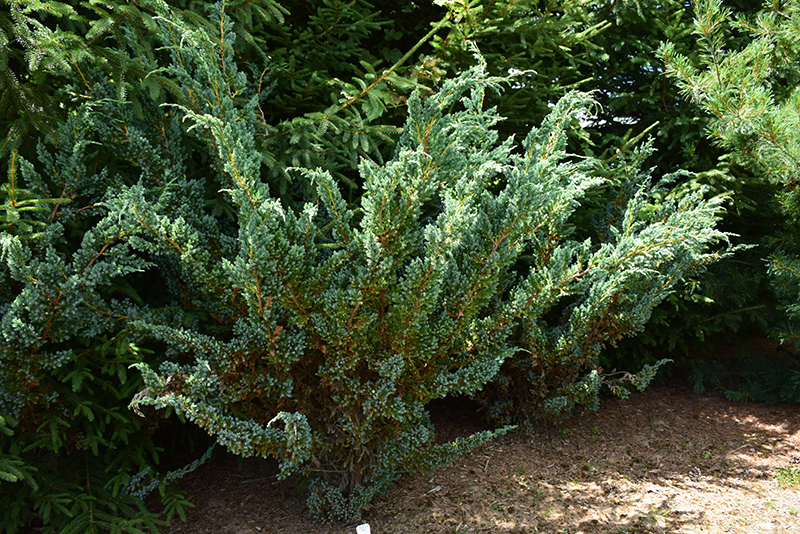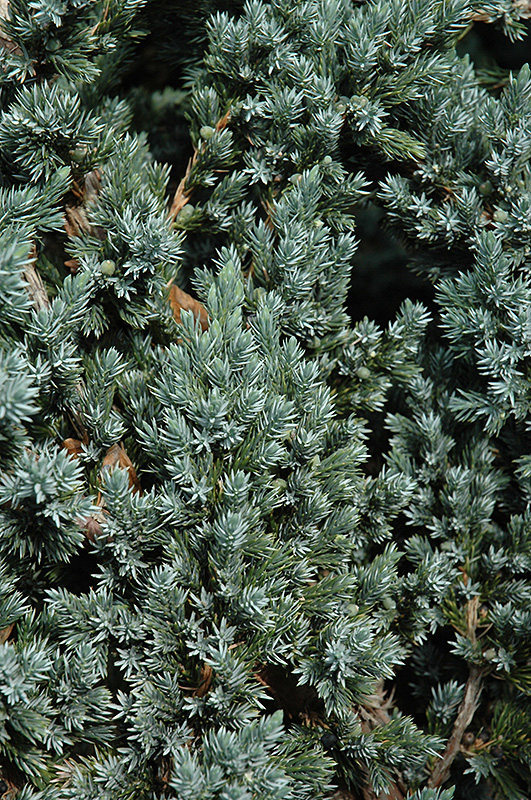Height: 6 feet
Spread: 4 feet
Sunlight:
![]()
Hardiness Zone: 4
Other Names: Singleseed Juniper
Description:
A very attractive evergreen shrub in youth with a light blue color and a vase shaped habit formed by the ascending branches but will mature to an irregular broad shape; takes on a purplish tint in the winter
Ornamental Features
Meyer Juniper is a dwarf conifer which is primarily valued in the landscape or garden for its ornamental upright and spreading habit of growth. It has attractive silvery blue evergreen foliage. The scale-like sprays of foliage are highly ornamental and remain silvery blue throughout the winter.
Landscape Attributes
Meyer Juniper is a dense multi-stemmed evergreen shrub with an upright spreading habit of growth. Its relatively fine texture sets it apart from other landscape plants with less refined foliage.
This is a relatively low maintenance shrub, and is best pruned in late winter once the threat of extreme cold has passed. It has no significant negative characteristics.
Meyer Juniper is recommended for the following landscape applications;
- Accent
- Mass Planting
- Hedges/Screening
- General Garden Use
Planting & Growing
Meyer Juniper will grow to be about 6 feet tall at maturity, with a spread of 4 feet. It tends to fill out right to the ground and therefore doesn't necessarily require facer plants in front, and is suitable for planting under power lines. It grows at a slow rate, and under ideal conditions can be expected to live for approximately 30 years.
This shrub should only be grown in full sunlight. It is very adaptable to both dry and moist growing conditions, but will not tolerate any standing water. It is considered to be drought-tolerant, and thus makes an ideal choice for xeriscaping or the moisture-conserving landscape. It is not particular as to soil type or pH. It is highly tolerant of urban pollution and will even thrive in inner city environments. This is a selected variety of a species not originally from North America.


